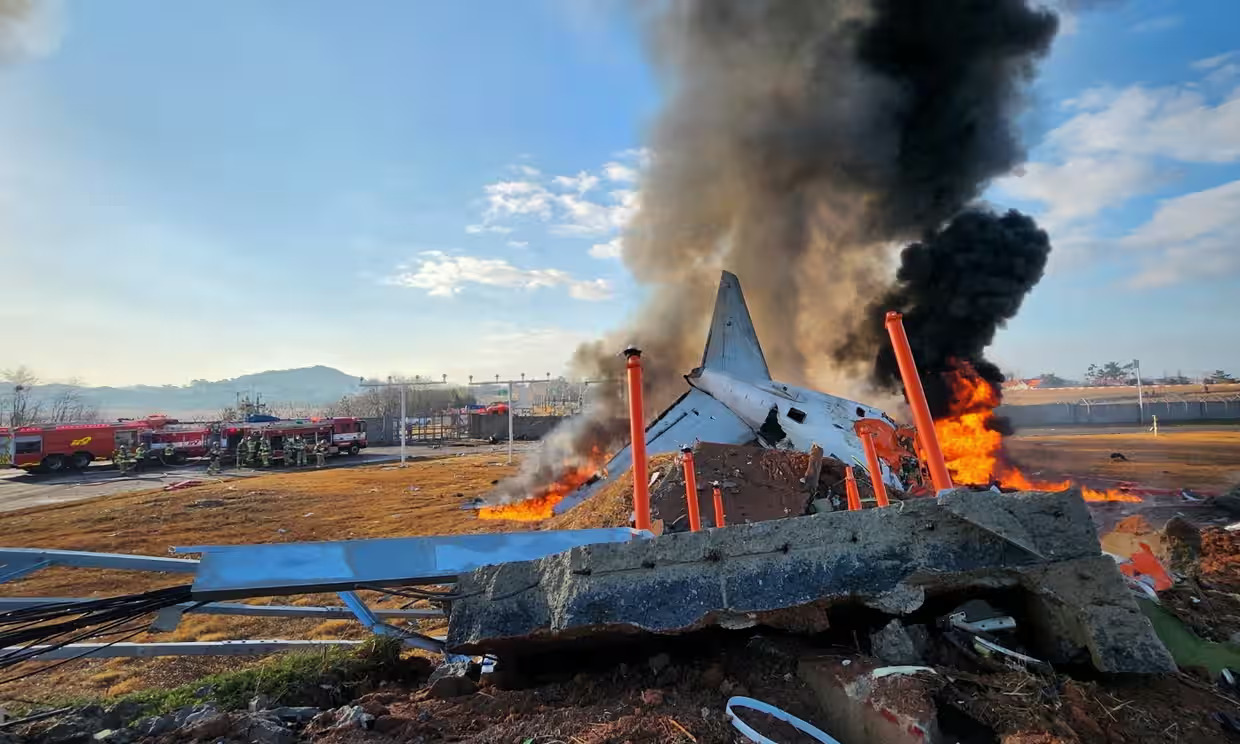A devastating aviation disaster occurred on Sunday when a South Korean airliner crashed at Muan International Airport, resulting in the deaths of 179 of the 181 people on board. The crash is now considered the deadliest aviation disaster in South Korea since the 1997 Korean Airlines Boeing 747 crash in Guam, which killed 228 individuals. Only two survivors were reported, with the cause of the crash still under investigation. The aircraft, a Jeju Air flight, was seen sliding at high speed before crashing into an embankment and bursting into flames, with visible smoke coming from the rear of the plane.
The crash is being thoroughly investigated, with a bird strike being considered a possible contributing factor. Air traffic controllers had warned the crew of potential bird strike risks just minutes before the crash occurred. One of the survivors reportedly mentioned a bird strike after being rescued. This raises concerns about the risk of bird strikes at Muan International Airport, which has a documented history of such incidents, particularly in the past few years.

Muan International Airport has earned a reputation for having the highest rate of bird strikes among South Korea’s regional airports. Data from the Korea Airports Corporation reveals that Muan recorded 10 bird strike incidents between 2019 and August 2024. This frequency of bird strikes is disproportionately high compared to other major airports in the country. Muan’s location near fields and coastal areas is believed to increase the likelihood of such incidents, putting aircraft at greater risk during takeoff and landing.
Nationwide, bird strike incidents in South Korea have been on the rise, from 108 in 2019 to 152 in 2023. To mitigate the risks, airports across the country have implemented countermeasures, such as sound deterrents and bird monitoring systems. Some airports are also exploring advanced technologies like AI and radar to better detect and track bird movements, in an effort to prevent accidents linked to bird strikes.
As the investigation into the Muan crash continues, crucial evidence has been recovered, including the aircraft’s black boxes, which contain flight data and cockpit voice recordings. These will be examined by South Korean authorities to help determine the precise cause of the disaster. Local fire officials and aviation experts have also suggested the possibility of a malfunction in the landing gear, which is another aspect being investigated. Authorities are piecing together all available information to understand the sequence of events leading to the deadly crash.


